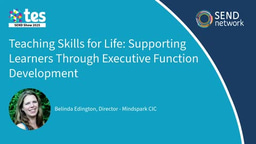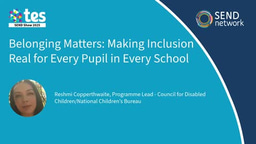Delivering high quality early years provision on a budget: The outdoor environment

Related Content
Just a moment...
Verifying you are human. This may take a few seconds.
Introduction
Under the Early Years Foundation Stage Framework (EYFS), providers must ensure that all children have access to outdoor play. Ideally, children should be able to access the outdoor area as part of free flow play and have the freedom to move between the indoor and outdoor environment as they choose to. However, if your setting does not have access to an outdoor environment on site, then you should plan for daily opportunities to access the outdoor environment within your local area such as a park or other green space. The outdoor environment should reflect the learning activities and opportunities that are available in the classroom and should be stimulating to encourage children to move, explore and investigate. You do not need expensive play equipment to have an amazing outdoor learning environment which promotes the development of all children. The aim of this third part of this four-part series is to provide you with some ideas and inspiration on how to create an inclusive and enabling outdoor environment on a budget.
Creating an inclusive and enabling outdoor environment
An inclusive and enabling outdoor environment is a space where children can play, explore and investigate safely, which is stimulating and motivating. A well thought out outdoor area, with purposeful resources can support each of the seven areas of learning and development within the Early years Foundation Stage Framework (EYFS).
In line with the underpinning theme of this series, to ensure that you have an inclusive and enabling outdoor environment, you need to be resourceful, creative and work with what you already have. You may have a large or small outdoor area, it may have grass, or it may be concreted. Look at the area you have and think about how you can make the most of the space that you have.
You need to also consider who is using the space. If it is a shared area, you need to ensure that it is suitable and safe for all the different ages and stages of development of the children using it. It must also be accessible to all children (and adults); if you have steps leading down to your outdoor area, consider putting in ramps. Everyone can use a ramp, but not everyone, such as wheelchair users, can use steps. It is worth noting that under the Equality Act (2010), which you must give regard to within your practice, you have to ensure you make reasonable adjustments to ensure any child with SEND can access the same opportunities as their peers who do not have SEND.
Like your classroom, it is important to have well defined areas in your outdoor space to help children know how to use it and where resources are kept, which can promote independence and self-directed learning. Here are some examples of the areas which you could create and activities that you could provide within it:
Continuous provision - as I mentioned previously, the outdoor environment should reflect the learning opportunities that are in your indoor environment; therefore, your outdoor area should have continuous provision. You may potentially have more space in your outdoor area so you may be able to offer some opportunities for continuous provision on a larger scale than what is available within your classroom. Think about having a sandpit into which children can climb to play and introduce some plastic pipes or pieces of bamboo for them to run water down.
In terms of water play, you can provide the children with a few large paint brushes and buckets filled with water. Painting with water is a fantastic opportunity for mark making outside. Children can use the water and brushes to make marks on the ground or walls/fences. It is cost effective, and the marks disappear when the water dries so there is very little cleaning up to do after. You can extend this activity by adding some food colouring into the water so the children can explore mixing colours.
Construction area - The same principle can be applied to construction play in the outdoor area in the way that it can be offered on a larger scale. Provide children with a range of resources and materials such as pieces of wood, rope, tyres, plastic pipes and wooden pallets. Give children enough space to be able to move, build and use these resources and materials how they choose to.
Mud kitchens - are a great resource for children to engage in sensory and messy play with natural materials such as mud, soil and pebbles. Using the natural materials enables children to experiment with them by mixing them together, which can help develop their scientific thinking and problem-solving skills. You can collect old pots, pans and utensils to stock the mud kitchen to encourage children to engage in role play, which can develop their creativity and imaginative skills.
Potting areas - enabling children to plant seeds and watch flowers and/or vegetables to grow provides them with first hand experiences of the life cycle of plants. Children will also learn how to nurture and care for their plants. Your setting may not have any green space in your outdoor environment, so you can create some by adding some raised flower beds (in wooden troughs) or have some simple flowerpots. You can also support the children in making their own compost by putting waste food products such as fruit and vegetable peelings into a designated compost bin.
Quiet space - some children may want to find a calm and quiet space in the outdoor area, where they can sit and look at books, relax, rest or even sit back and watch everyone around them. Find a space in your outdoor area, away from the busier areas and provide resources such as a tent (or make your own den from blankets/sheets) with some cushions and soft blankets so that children feel enclosed, secure and comfortable.
Space for physical activity - The outdoor environment is a great opportunity for children to develop their gross motor skills. They will have the space to be able to explore how they can move their whole bodies in different ways. You should ensure children have a safe, open space where they can run, jump, climb and engage in other gross motor movements.
During physical play activities, it is paramount to always ensure the safety of all children within the setting. However, it is also a crucial part of a child’s learning and development for them to be able to assess, plan and take calculated risks. Examples of risk taking can include enabling children to climb on and jump from play equipment or trees, attempt to balance on beams/wooden planks or stack wooden blocks to build a tall tower. You still need to supervise children and support them when they are engaging in this form of play.
Parents as partners - If your outdoor area needs some renovating, draw on the skills of your parents. Some parents may be a trades person and specialise in gardening, plumbing, carpentry or building. Draw on the skills of your parents by putting out a message asking if anyone could help you build a sand area, a simple mud kitchen or an activity wall using plastic pipes, may be some raised flower beds so that the children can plant some vegetables or flowers, even paint a mural along a fence or wall etc. There are many ideas and opportunities to encourage parents to get involved.
Conclusion
The outdoor environment can provide children with rich opportunities to enhance their learning and development. This article provided you with some suggestions of designated areas and activities that you can provide within your own outdoor environment. These are just suggestions, and you may not have the space to include them all. You need to work with the space and resources that you have and utilise it to ensure that it meets the needs of all the children, it is accessible and reflects their own interests. As with your indoor environment, creating an inclusive and enabling outdoor environment is not a one-off process. As part of good practice, you should always be reflecting on the effectiveness of your outdoor environment and make changes where needed to continually enhance the learning space.
In the final part of this four-part series, we will look at some potential funding sources that your setting may be able to access to help with gaining new equipment and resources. I will then draw the series to a conclusion by providing a brief overview of the key points discussed across the series.





Please sign in or register for FREE
If you are a registered user on SEND Network, please sign in